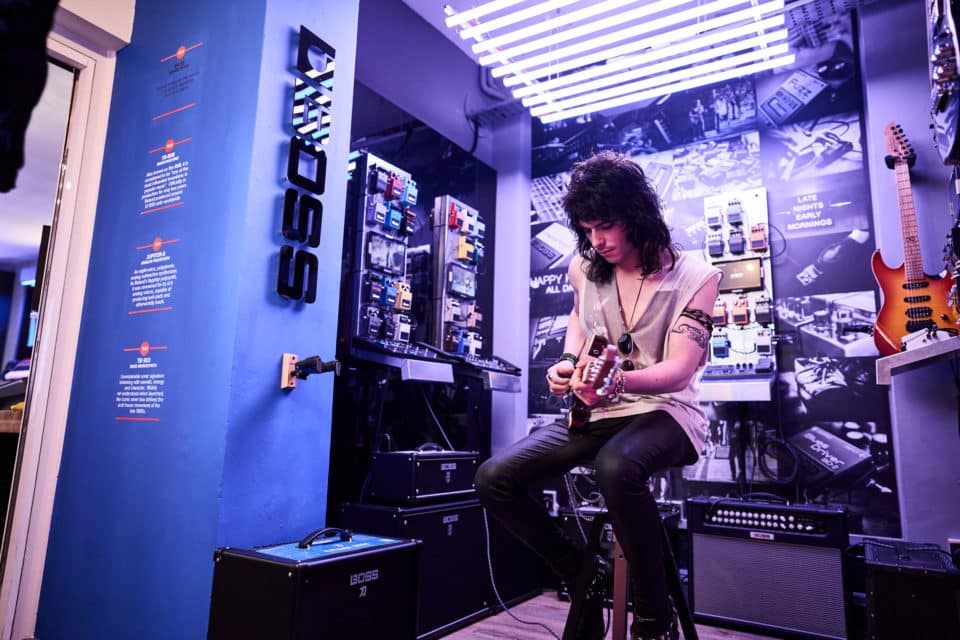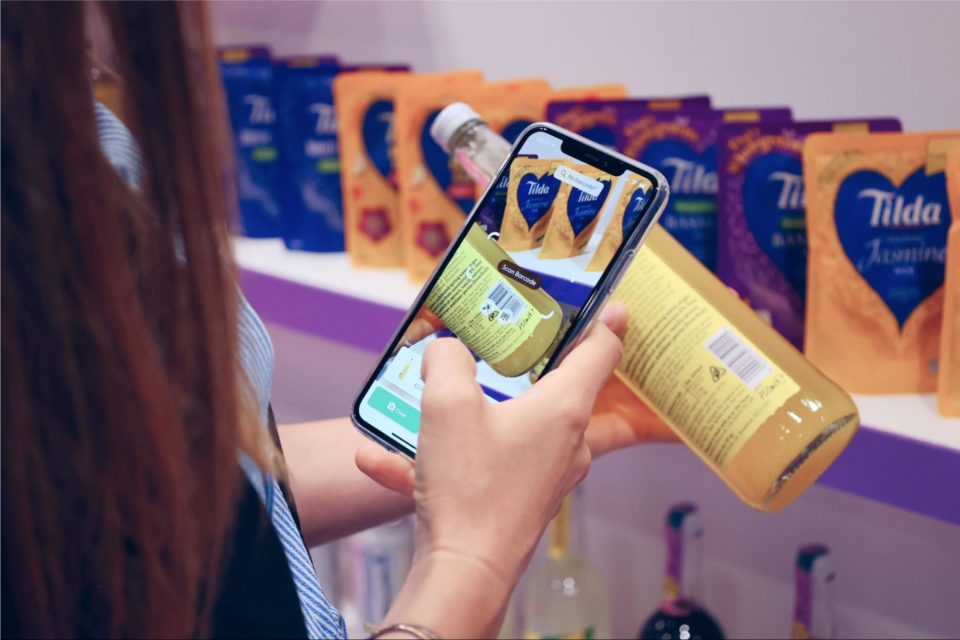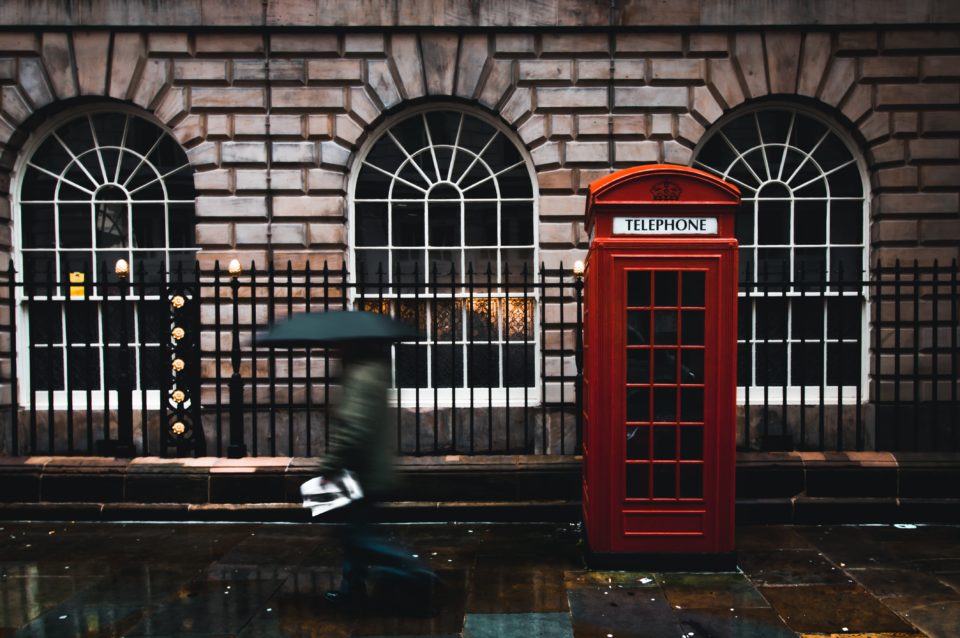Why the store does more for online retail than you think
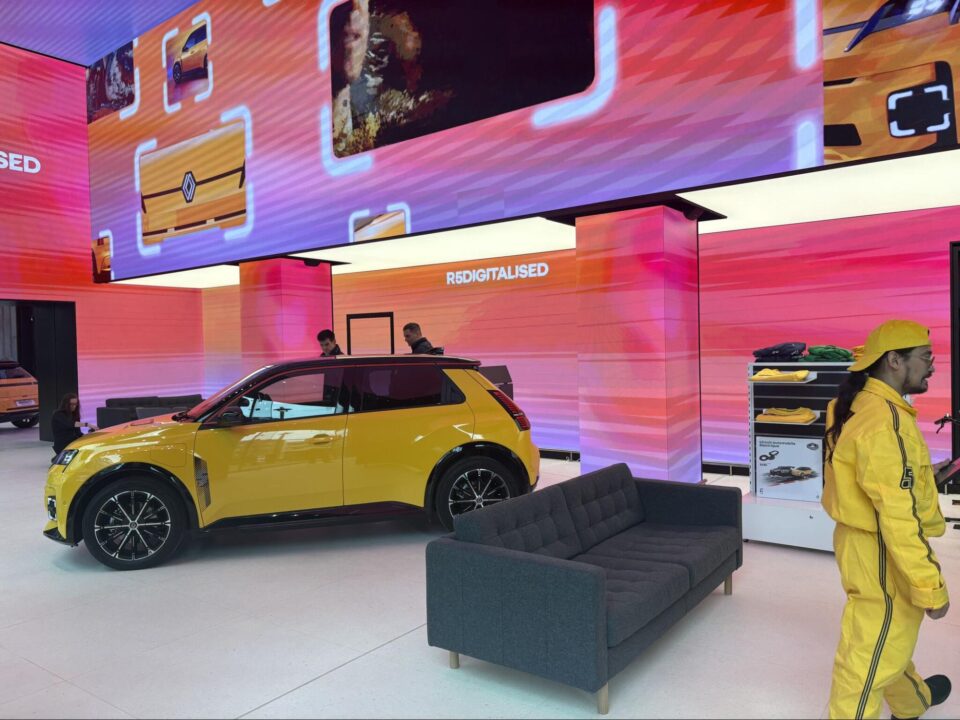
Ask anyone in retail about the relationship between the physical store and online retail and the word ‘omnichannel’ will probably pop up.
They’ll talk about things like click and collect or ordering in-store for delivery to home. Discovering in one channel and buying in another. And these are worthwhile, valuable additions to the customer experience.
But there’ll also be a strong sense that online does more for the store than the other way round. That ecommerce is the agile, digital youngster helping hold up the slow, ageing physical store.
This assessment completely ignores the fact that the store does a lot more for online retail than you might think. And the most forward-thinking brands have already latched onto this.
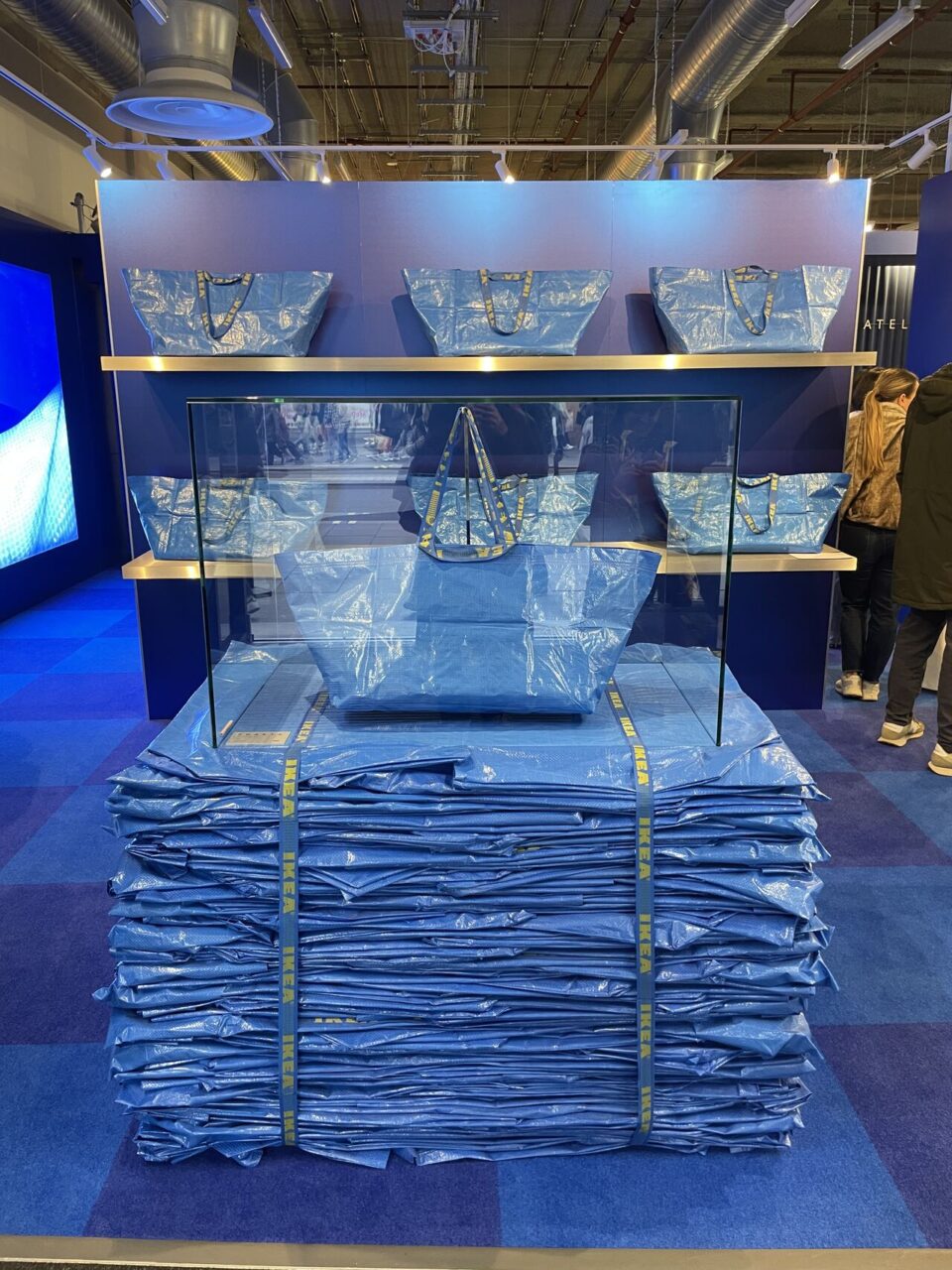
Getting attention
Attention has never been more valuable or harder to get.
If we’re looking at supply versus demand, then the supply of attention that each person has is a lot smaller than all of the demands for that attention. Especially online.
This is partly why people say attention spans are dropping – because there is literally too much for people to pay attention to. You don’t need to wait for even a fraction of a second to see if something will grab you because you can just swipe or scroll to the next thing. On repeat.
This is a problem every retail business is wrestling with – whether legacy name or digital-first start-up.
But it’s the legacy retailers that have it harder because there’s undeniable power in newness. What’s new is what gets attention.
And emerging brands have newness built in.
The problem is that the veneer of new wears off faster than ever as more and more digital-first brands pile into every sector of retail. And with them, the cost-per-click keeps ticking up. The fight to just be seen becomes more expensive.
For many brands – new and old – the answer is to put the work into making amazing, creative, physical spaces that have a role beyond just making sales. Tech has helped retailers create the infrastructure needed to support this shift, enabling valuable store functions like buy online and pick up instore (BOPIS), holistic loyalty, and clienteling.
But there are also new benefits emerging from modern store designs and one of the biggest is attention.
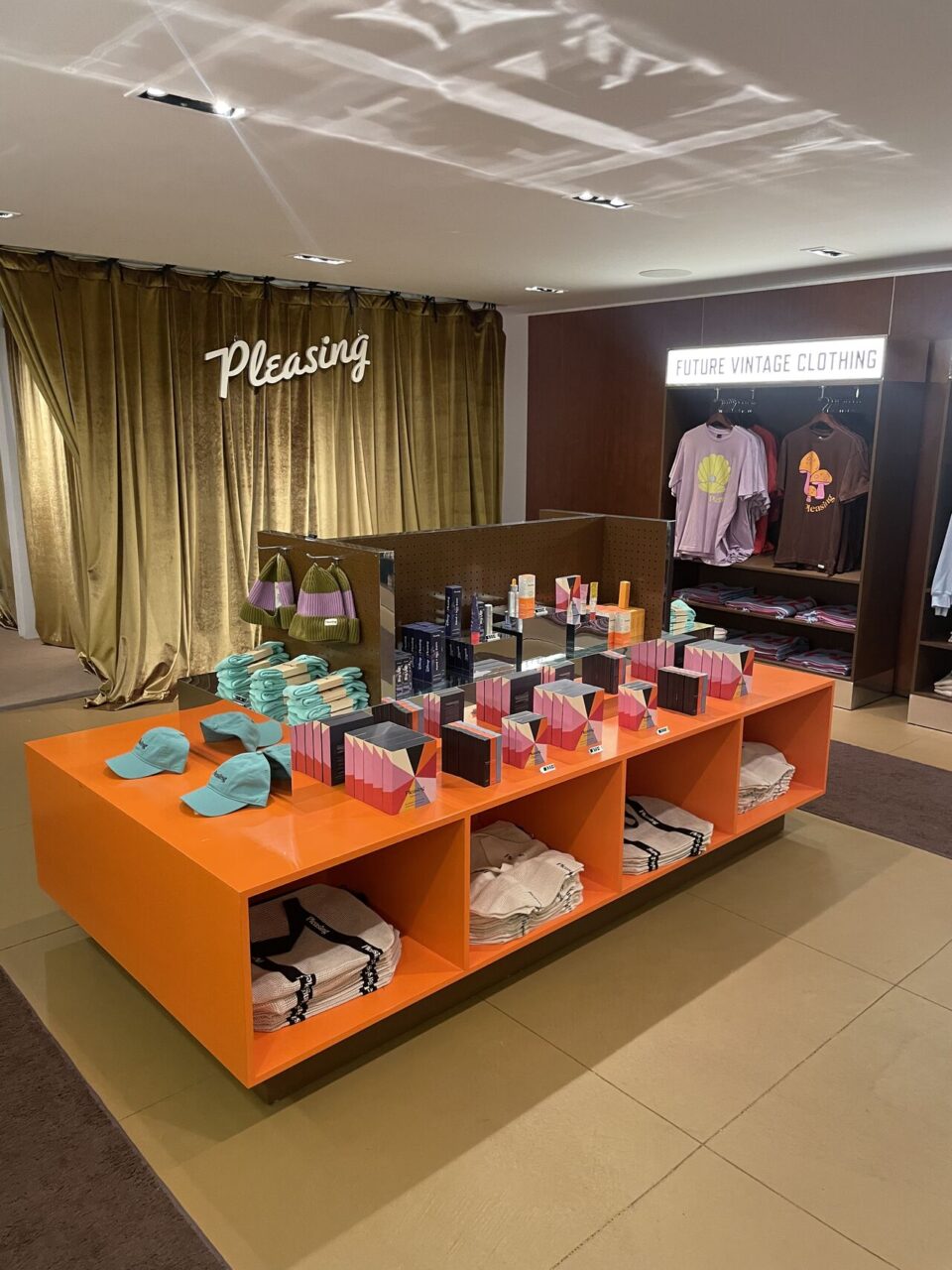
The store is an immersive ad
Brands used to get annoyed about the idea of people taking photos and videos in their stores. Some still do.
The forward-thinkers are now treating their store like an immersive advert. This means they’re not just designing their stores for selling, but also as places to create content – to be photographed, to be filmed – that can be posted online.
Digital-born brands that have broken through into the mainstream, like Glossier, led the way in this approach to their stores.
Emerging brands, like Harry Styles’ Pleasing, know from the start to create spaces that look good on a screen as well as in person.
Legacy brands are also following suit. IKEA’s recent Hus of Frakta pop-up in London was designed to get attention, not to shift lots of different products.
Putting value in customers capturing and sharing in-store moments is still a new concept for a lot of retailers. And yet the majority are likely to be familiar with the marketing principle of ‘the rule of 7’ – the idea that customers need to see the brand or advert at least 7 times before they buy.
Treating the store as a marketing – and sales channel – is one way to increase this visibility. Another is to design the store in a way that makes it look good in photos and videos so that customers share them online.
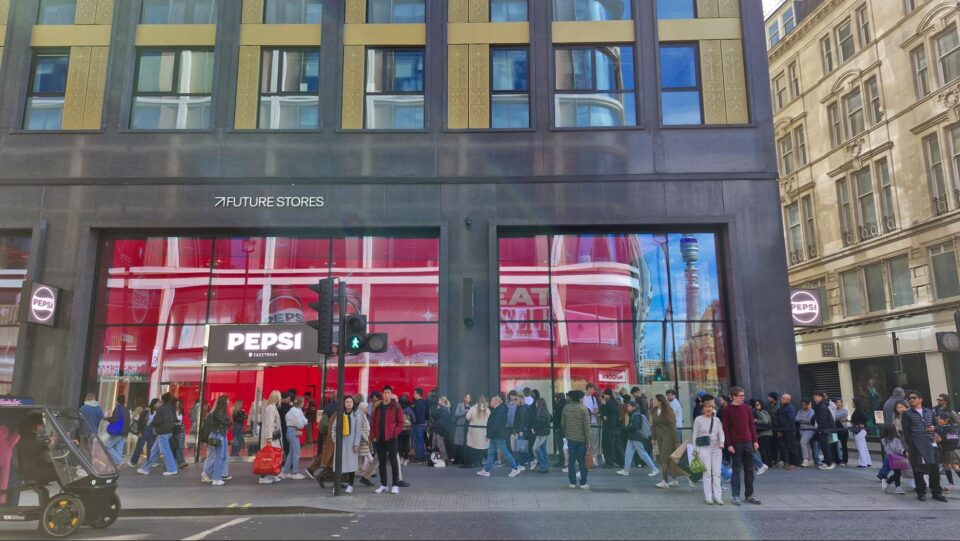
Measuring success
Some retailers will be unconvinced by the idea that their store should – to some degree – encourage content creation because they find it hard to measure the success. What are the KPIs if you’re not only focusing on sales per sq. ft?
Brands need to start measuring store-motivated activity in digital channels. This isn’t just online sales after a customer visits a store or customers who visit a pop-up and then follow your brand on social media. New KPIs could include online impressions of social media photos and videos recorded in stores, or the ‘halo effect’ – measuring uplift in digital sales in the area surrounding a new store. Measuring positive mentions of your brand online can be a way to gauge brand health.
Once brands understand how a customer’s experience in a store links to what happens online, they’ll see how much real-world value is tied up in that.
Because the store in every way is a profile raiser. There are literally only so many shopfronts and square footage in the major cities of the world.
If there was no value in physical retail, then new brands would stick to digital only. And this just doesn’t happen. The biggest, most well-known, most successful new brands get their products stocked on physical shelves, they open stores and pop-ups in key markets.
Razor companies Dollar Shave Club and Harry’s are on Target, Walmart, and Boots’ shelves. D2C beauty success story Glossier has stores across the US and in London, alongside regular pop-ups. Mattress company Casper has a growing physical presence with a mix of its own stores and retail partners.
Opening a physical retail space puts a spotlight on the brand. It’s a way to legitimise a brand and to build interest. And it’s a powerful marketing opportunity if brands commit to creating bold, interesting stores that make customers want to capture and share what they see.
Consider that no brand is investing in boring advertising – not deliberately anyway.
If you think about the store in the same way – as an immersive advert that your target customer can walk around in and interact with – there’s no reason not to make it as interesting as possible.
Because the more that people create content in your store, the more they are sharing your brand advert online – all without you having to pay to amplify those posts.
This is the power of the store over online. Once customers are in the store or walking past, you don’t have to pay more money to get their attention or get them to convert.
In ecommerce, you can have a website but everything that gets customers there is increasingly paid for. Search engine results. Social media platforms. Chatbot recommendations. Visibility is behind a paywall.
The store is a way to cut through. It’s holding up ecommerce just as much as digital helps physical. And brands are starting to realise this.
Attending Shoptalk Europe? Join Jack Stratten for a Barcelona retail safari powered by Jumpmind and explore one of the world’s best cities for retail inspiration.
Start with a global trends perspective, covering the latest retail and consumer trends, before a bespoke retail tour, taking in some of the best and boldest new retail spaces in Barcelona.
Spaces are limited, so register your interest here to secure your spot.
Related Articles
Below are other articles from our blog that cover similar topics:

